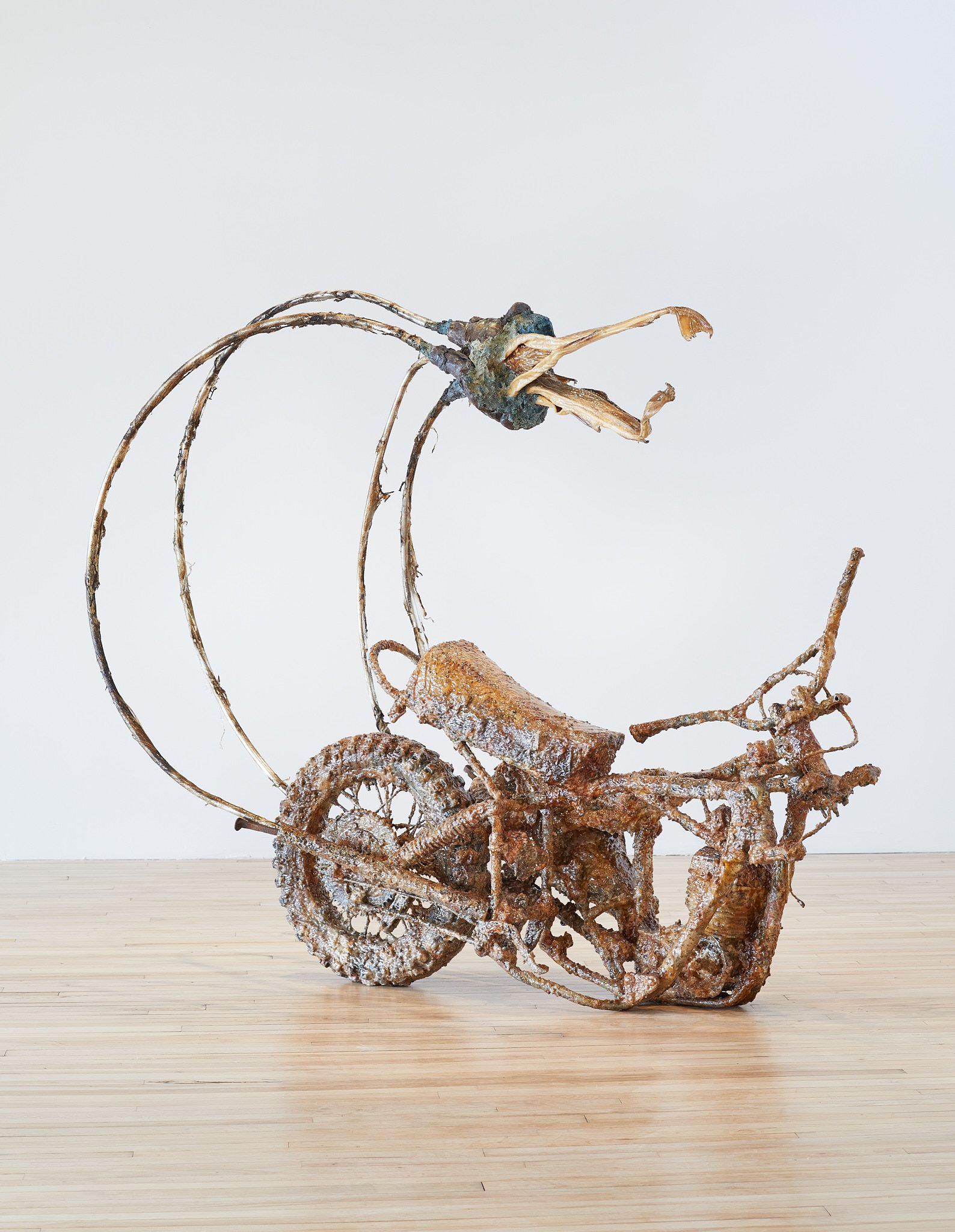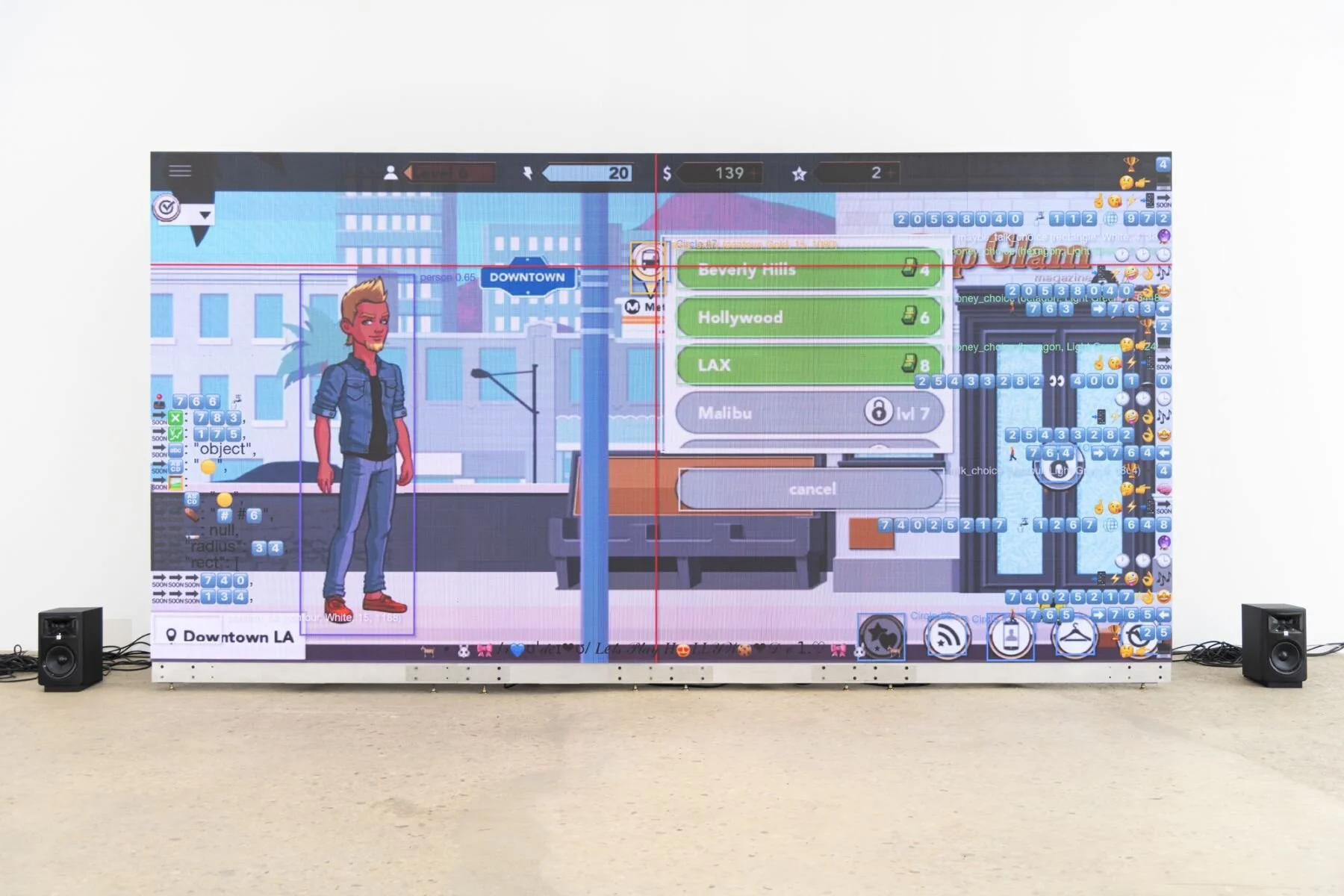The Revival of NO BODY
NO BODY, a group exhibition at Bushwick's Galerie Manqué, was the last opening I attended before the art world closed its doors this past March. Back then, nobody wore masks—COVID-19 was then believed to be mostly transmitted via contaminated surfaces—so we all elbow-bumped each other and wiped down our beer cans with Wet Ones and pretended things were normal. A few days later, it became apparent that normal was over for the foreseeable future. Six months and 200,000 deaths later, a version of "normal" has returned to New York as galleries reopen to limited visitors and pre-arranged appointments. Galerie Manqué has relaunched with a revival of NO BODY, a four-person group show that examines the fragmentation and technological augmentation of the human body.
Don Doe, A Game of Patience, N.D., charcoal on paper, 25 x 19 in. Image courtesy of the gallery.
Don Doe's drawings resemble baroque or neo-classical etchings gone horribly awry. In particular, the series on view in NO BODY recalls a set of wisely unattributed illustrations that accompanied an early edition of the Marquis de Sade's infamous novel, Juliette. In the anonymous etchings, as well as in the Marquis's writings, the human body is treated instrumentally, reduced to its raw productive capacity, and organized, directed, and manipulated in service of a larger program. In a prelude to the dehumanization of capitalist production, individual actors—or their body parts—are rendered interchangeable and replaceable, exemplified by the cast of expendable mutilated victims in Sade's meticulously organized encyclopedia of perversion The 120 Days of Sodom.
Don Doe, Awakened by a Mosquito, N.D., charcoal on paper, 24 1/2 x 17 3/4 in. Image courtesy of the gallery.
Doe's drawings aren't overtly pornographic in the manner of Sade but they exude a sense of perversion as bodies, and their constituent parts, meld and mesh with each other. The borders between bodies become more of a suggestion than any firm boundary between self-sovereign individuals.
Claire Jervert, Han (sitting 3.2016), Conté and chalk on Ingres paper, 14 x 10 in. Image courtesy of the gallery.
Claire Jervert's small, delicate conté drawings look like masterful life-drawing exercises. This is because they are, in a way: Jervert's portraits of humanoid androids are drawn from life, so to speak, in the physical presence of the artist's robotic sitters. Her drawings of individual android body parts, such as the ear and eyes on view in NO BODY, resemble Renaissance-era anatomical studies: drawings of cadavers that charted the intricacies of the body during the dawn of modern medicine.
Claire Jervert, Detail Study of Ear, Conté and chalk on Ingres paper, 5 3/4 x 4 in. Image courtesy of the gallery.
Jervert's studies of android anatomy examine a new kind of body, man-made to resemble its creators on a superficial level but which functionally bears little resemblance to its source material. Her carefully-rendered robotic ear doesn't hear in the same manner as a human ear does, as the sounds it picks up are digitized—broken down into microtemporal samples tens of thousands of times each second to be made understandable by a machine that can only comprehend the binary language of ones and zeroes.
Jesú Moratiel, still from Sweat, and other ways to return water to the clouds, 2020, digital video, running time 2:28.
Jesú Moratiel's digital video, Sweat, and other ways to return water to the clouds is based on 3D scans of actual human models. Superimposed on each other and glitched to the boundaries of recognition, these scans resemble the naked mass of humanity in Michelangelo's Last Judgment: both the saved and the damned are writhing piles of intersecting flesh moving in opposite directions.
Jesú Moratiel, still from Sweat, and other ways to return water to the clouds, 2020, digital video, running time 2:28.
Moratiel's video doesn't have this eschatological trajectory: the scanned bodies are frozen in space; statue-like, their motions consist solely of glitchy spasms and fasciculations. The camera zooms around and dives into the gaps between bodies and, occasionally, flies through them entirely. The camera's small scale makes the bodies appear colossal, like some heap of ruined statues pieced together by a mad or incompetent archaeologist.
Stine Deja, still from Hard Core, Soft Body 1, 2018, video with sound, running time 6:00. Image courtesy of the gallery.
Stine Deja's two videos from the Hard Core, Soft Body series—playing on monitors partially buried like headstones in piles of gravel on the gallery floor—also examine the atomized and technologically augmented body. The videos feature 3D renderings of isolated organ systems interacting with seemingly inappropriate prosthetics. The digestive system, mounted atop a blade-like artificial leg, bounces comically up and down while the spinal column has an oversized contact lens wedged against its Atlas vertebra. Fragmented and isolated from the human body, these organ systems have been given a sense of personality despite being disconnected from any individual person.
Stine Deja, still from Hard Core, Soft Body 2, 2018, video with sound, running time 6:00. Image courtesy of the gallery.
Faced with catastrophic illness, or the threat of it, the body ceases to be a functional whole and degenerates into a fragmented mess. When I suspected that I had been exposed to COVID in the aftermath of Armory Week, every breath became potential evidence of infection. The body becomes dominated by the lungs and breathing becomes an obsession as every deep breath provides reassurance and every shallow, labored breath takes it away. COVID affects practically every organ system in the body, causing further anxieties: every palpitation could be evidence of potential heart damage, a bruised toe becomes a harbinger of doom. The body isn't a functional whole, but a series of parts that, under ideal conditions, support and sustain each other. COVID hasn't changed this, but it makes this reality more apparent as we obsess over potential signs and symptoms of disease. The art in NO BODY seems to reach a similar conclusion: there is no body, just the instrumental interactions between organic and technological systems.
NO BODY
Stine Deja, Don Doe, Claire Jervert, and Jesú Moratiel
Galerie Manqué
56 Bogart St, Brooklyn, NY 11206
September 12-27, 2020
Please email galeriemanque@gmail.com to schedule an appointment.
Cover image: Jesú Moratiel, still from Sweat, and other ways to return water to the clouds, 2020, digital video, running time 2:28.


















